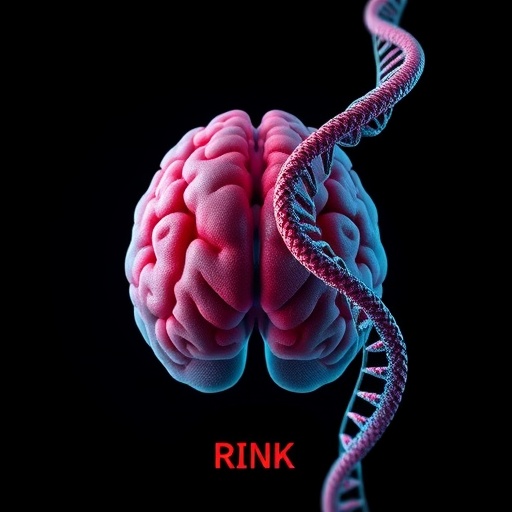A groundbreaking study emerging from the Miguel Hernández University of Elche (UMH) in Spain unveils a novel compound, MCH11, which promises to revolutionize treatments for alcohol use disorder (AUD). This innovative molecule, classified as a monoacylglycerol lipase (MAGL) inhibitor, has demonstrated impressive efficacy in curbing ethanol intake and diminishing the motivation to drink in murine models. Notably, the effects of MCH11 reveal marked sex-dependent differences, offering profound insights into personalized therapeutic strategies.
The extensive research, spanning four years and conducted by a multidisciplinary team from UMH’s Institute of Neurosciences, along with affiliations such as ISABIAL and RIAPAD, addresses a critical gap in AUD pharmacotherapy. Despite the significant global burden of AUD, responsible for approximately 2.6 million deaths annually, existing pharmacotherapies fail to maintain long-term abstinence in the majority of patients. Alarmingly, relapse rates hover around 70% within the first year post-treatment, underscoring the urgent demand for novel pharmacological interventions.
Central to the innovation behind MCH11 is the modulation of the endocannabinoid system (ECS), a complex neuromodulatory network that intricately connects the brain with various physiological processes regulating pleasure, motivation, and stress responses. In individuals afflicted with AUD, dysregulation of the ECS is evident, notably through diminished levels of 2-arachidonoylglycerol (2-AG), an endogenous cannabinoid associated with well-being and impulse regulation. MCH11 operates as a selective inhibitor of monoacylglycerol lipase, the enzyme responsible for degrading 2-AG, thereby elevating its cerebral concentrations to restore homeostatic balance.
Through the inhibition of MAGL, MCH11 effectively enhances endogenous 2-AG signaling, translating into significant reductions in ethanol consumption and the compulsion to drink, as observed in controlled animal studies. These effects were accompanied by a reduction in withdrawal symptoms, a major hurdle in AUD recovery. Intriguingly, behavioral assessments revealed that treatment with MCH11 imparted anxiolytic and antidepressant-like effects, suggesting a dual therapeutic action addressing both dependence and comorbid affective disorders without compromising motor or cognitive faculties.
Sex-dependent responses emerged as a compelling dimension of MCH11’s pharmacodynamics. Male mice exhibited significant reductions in ethanol intake and enhanced behavioral outcomes at low to medium doses, whereas female mice required higher dosages to achieve comparable benefits. This divergence not only highlights biological sex as a crucial variable in addiction therapy efficacy but also advocates for sex-specific dosing regimens in future clinical translations.
At the molecular level, quantitative PCR analyses demonstrated that MCH11 rectifies gene expression perturbations associated with AUD in both sexes, albeit with dose-dependent variance between males and females. Genes implicated in neurotransmitter regulation, neuroinflammatory pathways, and synaptic plasticity were among those normalized, providing mechanistic insights into how MCH11 counters alcohol-induced neurobiological alterations.
Beyond monotherapy, the research team investigated the synergistic potential of combining MCH11 with topiramate, an FDA-approved antiepileptic repurposed for combating alcohol dependence. The combinatorial regimen exhibited superior efficacy in attenuating ethanol use and modifying drinking motivation, surpassing outcomes observed with either compound alone. This finding paves the way for developing multifaceted, personalized pharmacological approaches embracing both innovative agents and established medications.
Although these preliminary results stem from animal experimentation, the implications for human AUD treatment are substantial. MCH11’s capacity to selectively ameliorate alcohol consumption behaviors and associated neuropsychiatric symptoms without detrimental side effects positions it as a frontrunner in next-generation pharmacotherapies. Importantly, the nuanced sex-dependent variations underscore the necessity for precision medicine paradigms tailoring interventions to individual biological profiles.
The translational journey from murine models to clinical application remains a formidable challenge. Nevertheless, the current findings provide a robust foundation for subsequent pharmacokinetic, toxicological, and eventually clinical trials to explore MCH11’s safety, efficacy, and optimized dosing in humans. UMH’s interdisciplinary team remains committed to advancing this promising candidate through the drug development pipeline.
In conclusion, the discovery of MCH11 ushers in a new era of neuropharmacological intervention for alcohol use disorder, harnessing the therapeutic potential of the endocannabinoid system. By restoring neurochemical balance and mitigating maladaptive behaviors intrinsic to addiction, MCH11 exemplifies the synergy between molecular innovation and clinical needs. Its sex-specific efficacy further challenges the convention, advocating for more individualized treatment frameworks to combat the pervasive and complex disorder that is alcoholism.
This research was spearheaded by lead author Abraham Torregrosa and co-authored by María García Gutiérrez, Daniela Navarro, Francisco Navarrete, and Professor Jorge Manzanares. The study was generously funded by Spain’s Ministry of Science, Innovation and Universities, the State Research Agency, the Carlos III Health Institute’s RIAPAD network, and ISABIAL.
Subject of Research: Animals
Article Title: MCH11, a new monoacylglycerol lipase inhibitor, reduces ethanol consumption and motivation to drink in mice, with sex-dependent differences. Biomedicine & Pharmacotherapy
News Publication Date: 21-Oct-2025
Web References: 10.1016/j.biopha.2025.118662
Image Credits: Instituto de Neurociencias UMH-CSIC
Keywords: Alcohol abuse, Substance abuse, Human behavior, Substance related disorders, Alcoholism, Diseases and disorders, Antidepressants, Medications, Drug therapy, Drug dosage, Drug development, Neuropharmacology, Molecular neuropharmacology
Tags: endocannabinoid system modulationethanol consumption reductioninnovative treatments for alcoholismMCH11 molecule for alcohol use disordermonoacylglycerol lipase inhibitormotivation to drink in micemultidisciplinary research in neuroscienceneuromodulatory networks and addictionpersonalized therapeutic strategies for AUDpharmacotherapy for alcohol use disorderrelapse rates in alcohol treatmentsex-specific effects in AUD





